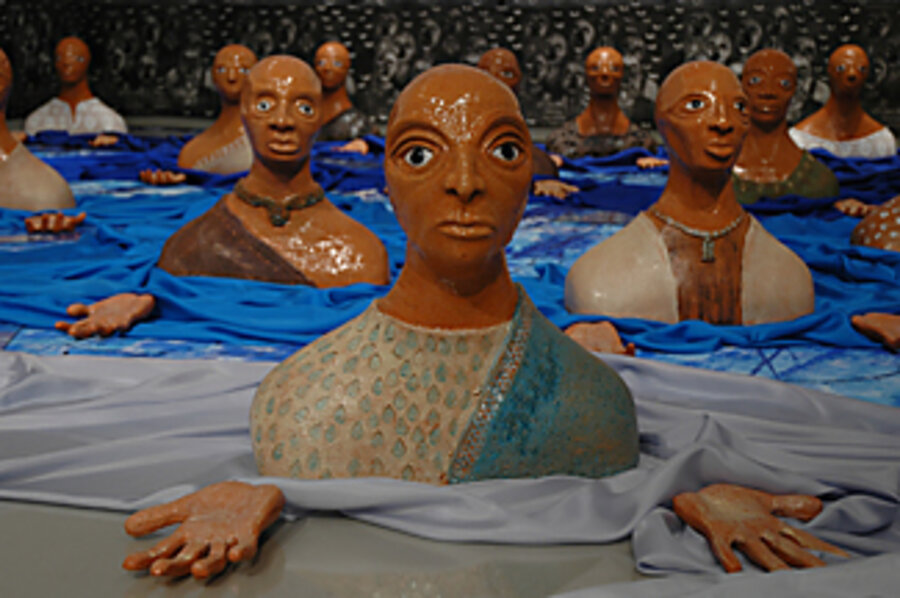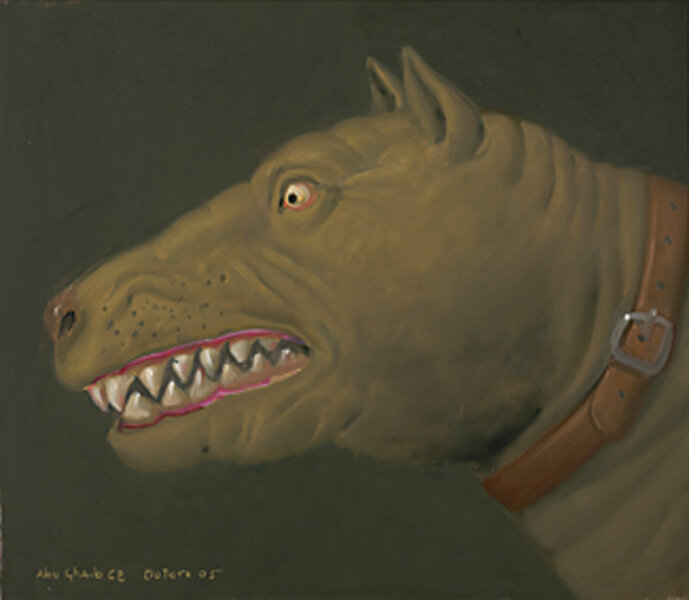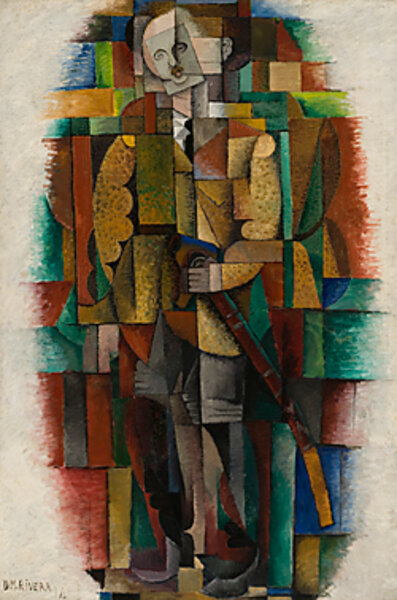The heart of Latin art
Loading...
| Santa Ana, Calif.
Latin American art is hot. Just ask the enthusiastic patrons of the Bowers Museum. Tucked away 30 minutes south of Los Angeles, this medium-sized art center has managed to make a name for itself bringing shows that say something about where the public's cultural heart is headed. And these days, increasingly, that is toward creativity from south of the US border.
"This is a story of growing social, political, and economic awareness between the world's remaining superpower and its intimate neighbors," says Richard Townsend, director of the Museum of Latin American Art (MOLAA) in nearby Long Beach, "one that is being told through the language of art." The twin shows at the Bowers (LATITUDES: Latin American Masters from the FEMSA Collection and "The Baroque World of Fernando Botero"), are part of what curators and critics from all over the hemisphere are calling an important flowering of interest in art from Chile to Puerto Rico, Cuba to Colombia.
"There appears to be an unprecedented number of major shows about Latin American artists right now," says Ramon Cernuda, owner of Cernuda Arte in Coral Gables, Fla. Latin American art is showing from coast to coast: Florida's Naples Museum of Art ("Latin American Painting Now"); Lyman Allyn Art Museum in New London, Conn., ("Ajiaco: Stirrings of the Cuban Soul," "Ancestors of the Passage"); University of California, Berkeley, Art Museum (Fernando Botero's controversial Abu Ghraib works); Indianapolis Museum of Art ("Sacred Spain: Art & Belief in the Spanish World"); and The Menil Collection in Houston ("Joaquín Torres-García: Constructing Abstraction with Wood").
Hispanic Heritage Month (Sept. 15 through Oct. 15) has helped promote interest. But as numerous culture watchers observe, the story is much deeper than that. As Mr. Townsend points out, the market began to take off in the 1980s, when prices for many big names, such as Mexican muralist Diego Rivera and fellow Mexican painter Frida Kahlo, began to soar.
Now, social and economic pressures are pushing the US and Latin American countries ever closer, says Lyman Allyn guest curator Gail Gelburd. "The shifting demographics of today are making it more important than ever that we find ways to understand other cultures, and art is a vital tool for that," she adds.
As cultures grow increasingly global, artists are reaching across boundaries to frame the global human experience for all nations. Witness Colombian Fernando Botero's response to news of abuse at Abu Ghraib prison. "This generation will understand the Abu Ghraib reference," says Berkeley curator Lucinda Barnes, "but this art transcends this moment and place to become timeless works for all people…."
This wealth of imagery paints a vivid picture of where Latin American art has come and where it is headed. The survey of Latin masters at the Bowers includes Cubism, portraiture, landscapes, muralism, Surrealism, and Abstraction with such artists as Frida Kahlo, Wilfredo Lam, Roberto Matta, Jose Clemente Orozco, Diego Rivera, David Alfaro Siqueiros, Jesús Soto, and Rufino Tamayo.
"Latin America is the only continent in the world where you have a fusion of cultures in the most radical manner," says curator at-large Gregorio Luke, who lectures about Latin American art around the world. In contrast to the US, where the historic response to indigenous peoples has been one of suppression, Latin countries have fused the many foreign influences, such as those of African slaves and European conquerors, with their native populations, and this is reflected directly in their art.
Many of the works – from the satirical works of Botero to the religious iconography of Wilfredo Lam – tackle political and religious issues. The Mexican muralists such as Rivera celebrated the so-called primitive, points out Mr. Luke, to the point where Latin American art was often derided as folk art.
"This was promoted by the muralists of Mexico [who] put a large focus on indigenous people," says Luke.
But, he says, this misreads the sophistication and worldliness of these artists. Throughout the 20th century, many Latin American artists traveled to Europe, where they absorbed the lessons of modernism as well as the old masters, alongside artists such as Picasso and Matisse. They created their own vision of those styles. The contemporary Latin American artists on display at the Naples (Fla.) Art Museum vividly carry forward many of the characteristics that have traditionally defined Latin art. "Vibrant colors, figurative imagery, and a joyful embrace of everyday objects," says director Michael Culver.
He points to such artists as Marco Tulio, whose work "The Bullfighter's Hat" offers a contemporary spin on traditional elements of Latin American art. "He paints like the old masters with layers on layers that create a fine, wonderful surface that looks immaculate – almost like a photo – but also almost surreal in the way he places the object," says Mr. Culver, adding that it also evokes another traditional Latin theme — magical realism, in which simple objects take on meaning.
The breadth of these exhibitions shows that Americans are moving beyond what one curator has dubbed "the Ricky Ricardo effect," an attitude that considers only the exotic primitive works as "authentically" Latin. "Historically, there has been a hunger and a market for things that seem exotic and picturesque," says Ilona Katzew, curator of Latin American Art for the Los Angeles County Museum of Art, "but that has been reassessed by specialists and many serious collecting museums who are trying to do away with that and present a more complex picture of what has happened in this hemisphere."
Back in Santa Ana, Christian Galindo, a horticulturist from Guatemala, pauses in front of a Frida Kahlo painting. He is "moved," to see so much attention being drawn to Latin American artists. "This is something when I was younger, I did not see," he says, adding as he turns to the airy rooms brimming with oversize canvases and sculptures. "I made the trip to give myself the confidence that our art means something to the rest of the world."
Mexican art critic Berta Taracena echoes this assessment. "This exhibition shows that Latin American culture is strong," she says by phone from Mexico City. These masterpieces clearly demonstrate that although these artists had a dialogue with European traditions, she adds, "they clearly had their own vision."




